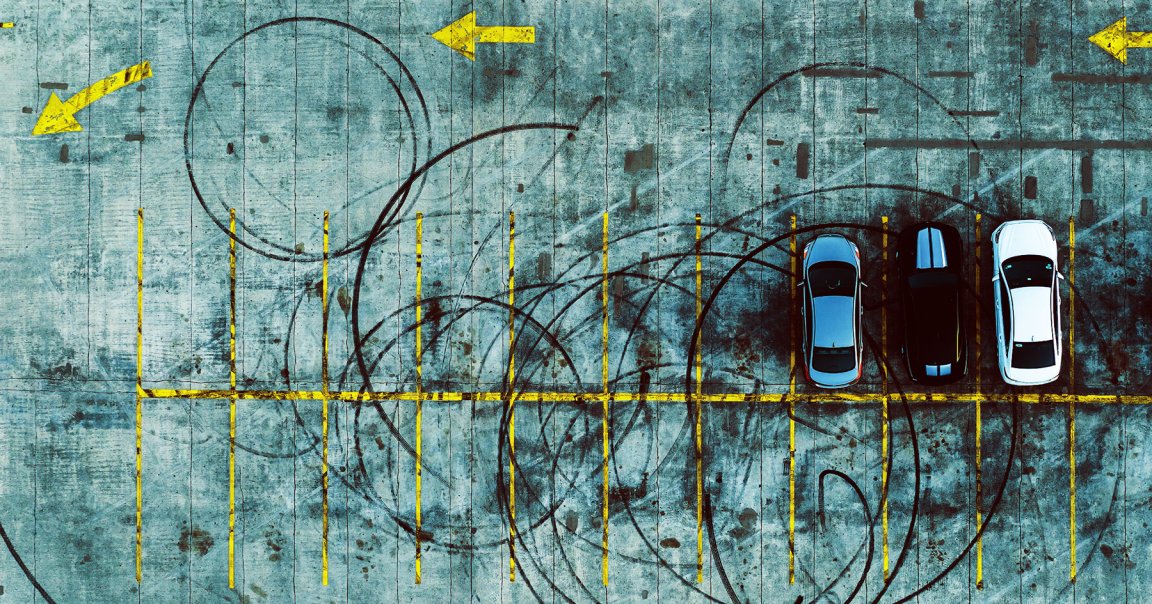
Footage taken by a passenger shows a Tesla Robotaxi getting totally stumped as it tries to escape a parking lot, aimlessly driving in circles while its human “safety monitor” sits bored in the front passenger seat, doing nothing to intervene.
Ladies and gentlemen: the self-driving software that Elon Musk says will be piloting millions of cars by the end of next year.
The video was uploaded by Dan Burkland, a self-described EV enthusiast. In a tweet, he explained that he “threw a curveball” at the robotaxi by having it pick him up in a busy parking lot where the normal exit had been blocked by traffic cones.
And credit to the Model Y, it does recognize that the exit’s been coned off. But this minor obstacle ends up throwing the robotaxi through a loop — literally.
As Burkland explains in the video, the temporary exit is where the entrance is, which has pavement markings that show it’s one direction only. Bereft of ideas, the robotaxi keeps driving in a circle, vainly searching for another way out that simply isn’t there. It was on its sixth lap and probably could’ve kept looping around for even longer, but Burkland decided to call in support.
It’s not a great look for Tesla’s robotaxi service, which is a limited, invite-only program that operates in Austin and which has already earned the attention of federal regulators for apparently violating numerous traffic laws. But it provides a glimpse of how Tesla’s remote support team of teleoperators handle a sticky situation like this, of which many more like it will inevitably come. And spoiler: it takes a minute to sort out.
First, with the car still looping around, a support agent answers Burkland’s call to acknowledge they’re working on the issue, producing this masterpiece of an understatement.
“It looks like your vehicle seems to be failing to make progress,” the support agent says.
One lap later, another support agent gets on the phone, and the car is soon brought to a halt.
After another minute, the car starts moving again — but slowly. And though the car’s interface shows that Full Self-Driving is engaged, Burkland suspects that a teleoperator had taken over the vehicle due to its sluggish, delayed movements. It also comes to a stop randomly as it inches forward — “almost like, again, someone’s trying to override what the system wants to do,” Burkland said.
Eventually, it picks up speed and starts following updated navigation instructions that allow it to take the temporary exit, Burkland said. In all, it takes between five to six minutes before the robotaxi finally makes its great escape from the apparently labyrinthine parking lot.
“I’m glad Tesla support has a process for this,” Burkland enthused.
Tesla isn’t alone in its struggles. Waymo robotaxis have also been caught driving in circles, foiled by mystifying terrain features like roundabouts and, yes, parking lots. But Tesla’s service has drawn additional criticism with its seemingly rushed launch, in which it jumped straight into commercial operations — whereas its competitors like Waymo spent years in a testing phase before charging customers. (Tesla initially charged $4.20 per ride; it’s since bumped the price up to an equally juvenile $6.90.)
Prior to the launch, Tesla had never demonstrated that it could produce a driving system with Level 4 autonomy — which is what Waymo and others have — meaning that it could operate without a driver behind the wheel in limited conditions. The highest it achieved was Level 2 with its Full Self-Driving software — and that’s been involved in multiple deadly accidents. Several of the robotaxis have been caught driving dangerously or erratically.
Burkland is pleased with how Tesla support handled things, but acknowledges that hiccups like these might be be a persistent thorn in the automaker’s side.
“Once the service gets more big and is around longer and expands to other cities this can be commonplace,” he says. “But I’m glad they have a way of dealing with it now.”
More on Tesla: Tesla Rolling Out Robotaxis With Human Drivers in the Driver’s Seat, Defeating the Purpose of a Robotaxi